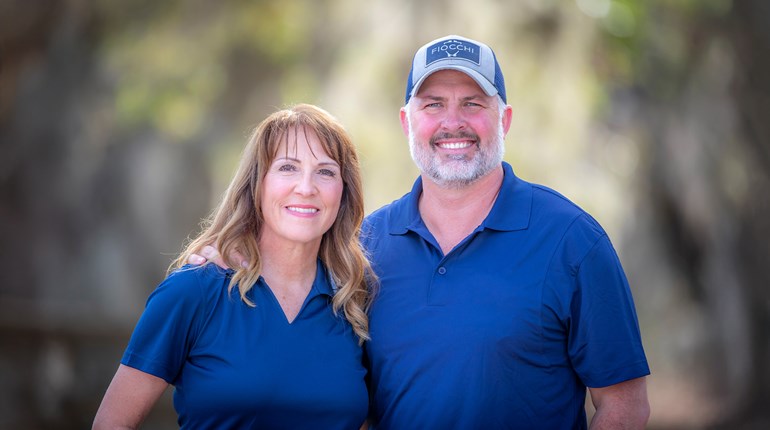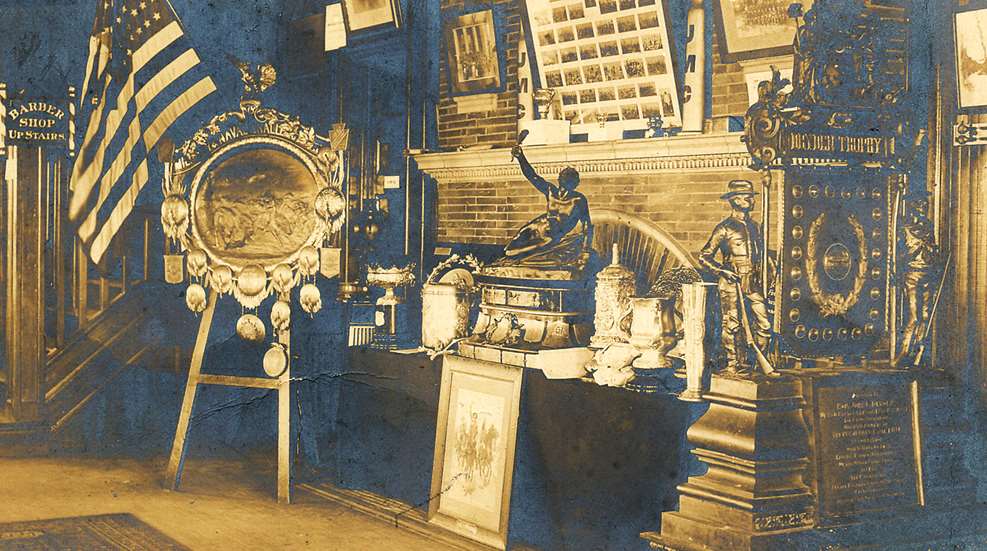
Editor’s note: Be sure to read Part 1 of this series if you haven’t already.
Endeavoring to truly live up to the “National” in its own title, NRA reached wide for people outside the Association’s New York home headquarters. As more practice areas and ranges became available, more shooters beyond the dominating force of Creedmoor shooters became eligible for American team placement in international competition. Here, the next impressive trophy came into play.
The Hilton Trophy, a massive shield executed by Tiffany’s, was introduced to competition in 1878 as an award in the international military match. This event was open to eight-man teams from state military organizations, various departments of the regular Army, and any foreign armed forces team. Despite new trophies and significant promotion, no foreign team showed for the original event and international competition soon started to fade from national interest, even as home military tournaments took on new steam.
In 1880, the Army won the Hilton award, their victory produced steady improvement in techniques after a defeat at the inaugural event. During their two-year struggle to win the Hilton, bitterness had existed within the Army at its inability to produce a service-issue manual on rifle procedures suitable to Army practices. Attempts to do so had only resulted in direct plagiarism or heavy borrowing from Wingate’s Manual of Rifle Practice, the only competitive manual in existence at the time. As the National Guard was the foundation of NRA and the Manual of Rifle Practice was intended for National Guard use, this manual became NRA’s marksmanship bible. So determined to beat the National Guard’s superior NRA-sponsored program, the Army, upon finally winning the Hilton, promptly returned the trophy to NRA and refused to compete in any other NRA-sanctioned event.
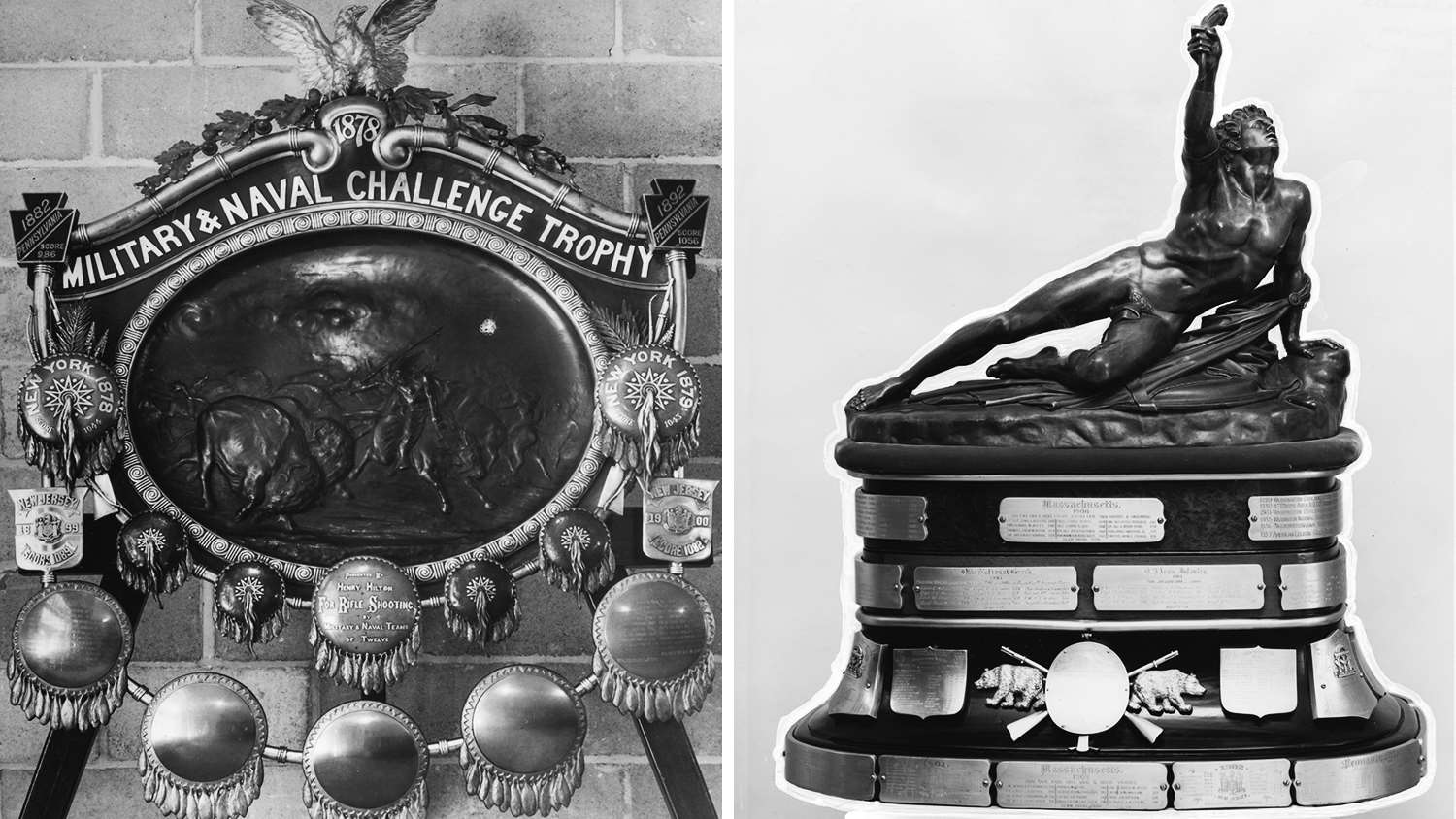
Though the Army’s withdrawal was hard for NRA to swallow, it was nothing compared to fates awaiting it shortly thereafter from the newly elected governor of New York, Alonzo Cornell. Visiting New York, Wingate, now a general, called on Cornell to present the Soldier of Marathon Trophy at the upcoming Annual Matches. The large, reclining bronze figure posed on a tall oval pedestal, had been given by the state of New York to NRA in promotion of interstate National Guard competition. Since its inception, it was tradition for the governor of New York to make the award presentation; but, Cornell declined declaring there would be no war in his time, becoming one of the first harbingers of American gun control.
Responding in a rage to Wingate’s honorary request, Cornell spat, “The only need for a National Guard is to show itself in parades and ceremonies. Rifle practice for these men is a waste of money, and I shall not countenance in my presence anything as foolish as a discussion of rifle shooting at Creedmoor.” An astounded Wingate argued that if soldiers were to carry guns, they should be trained in using them, at which point Cornell raged that their rifles should be taken away. Budget cuts handed down from Cornell shortly thereafter reduced the New York National Guard to a drilling corps, and state-issued materials at Creedmoor were removed from NRA use. This resulted in very black days for NRA with much of its financial backing coming from the state of New York.
NRA forges ahead
As hard financial times were faced by America after the “panic of 1884,” NRA felt the pinch in the wallet as much as the average citizen. Lack of backing and the unfavorable conditions between New York and its National Guard throughout the mid-1880s cast NRA’s eye to the New Jersey State Rifle Association’s range at Sea Girt. In this move, the New Jersey association essentially retained NRA’s powers in handling the national matches and NRA trophies. Further confounded by the residual effects from the New York political scene and America’s growing interest in other sports, NRA took on a rather dormant existence through the late 1880s and 1890s. Even as affiliated clubs were seeking attention from new groups of shooters, NRA struggled through the end of the century before finding a new national identity.
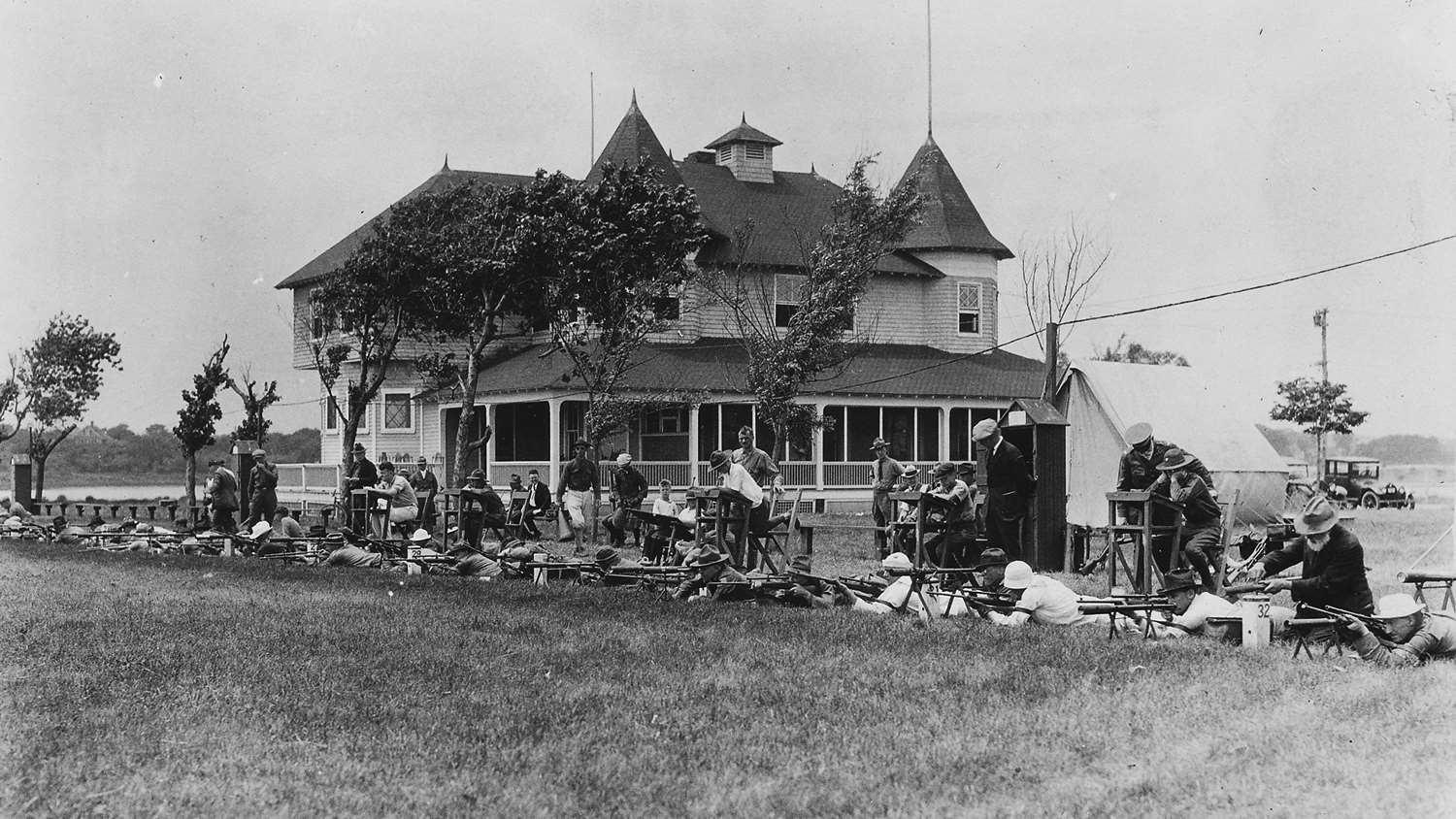
In 1900, NRA once again became a competitive force. A new award, the Members’ Trophy, donated by NRA in part to signify its newfound strength, made its first appearance in 1901. The tall, Grecian-style, handled pitcher is sterling silver and quite tall. Miniature replicas were originally given to each winner in the members’ match—a high power rifle match still active today.
The Palma Trophy consequently returned to the competitive spotlight, if only as a symbol, in 1900 after being discovered in a Washington, D.C. military museum by an employee of Shooting and Fishing Magazine—a predecessor of The American Rifleman—the Palma once again became an official award in 1901, with Canada taking home the honors. The British took the award home in 1902 and the Americans finally regained their most esteemed long range trophy in 1903.
Unfortunately, as long as the road to the Palma had been for the Americans, the 1903 win was surrounded by a marked controversy. The Americans, competing on British soil, were using an “improved” version of the Krag-Jorgensen rifles last issued by the U.S. government before the M1903 Springfield turned heads. This model had a special, eight-groove “gain-twist” barrel designed by the great barrel maker of the day, Harry Pope. The standard issue Krag was a four-groove, and this is where the objection lay. The terms of the Palma match were explicit: rifles should be of a type officially approved by the government of the nation competing. A genuinely small piece of paperwork, gaining the “stamp of approval” was overlooked by the U.S. Team. As arguments over the legality of the match win dragged on, NRA made a fine exhibition of sportsmanship, sending the Palma trophy back to Britain. There it remained out of circulation again for several years.
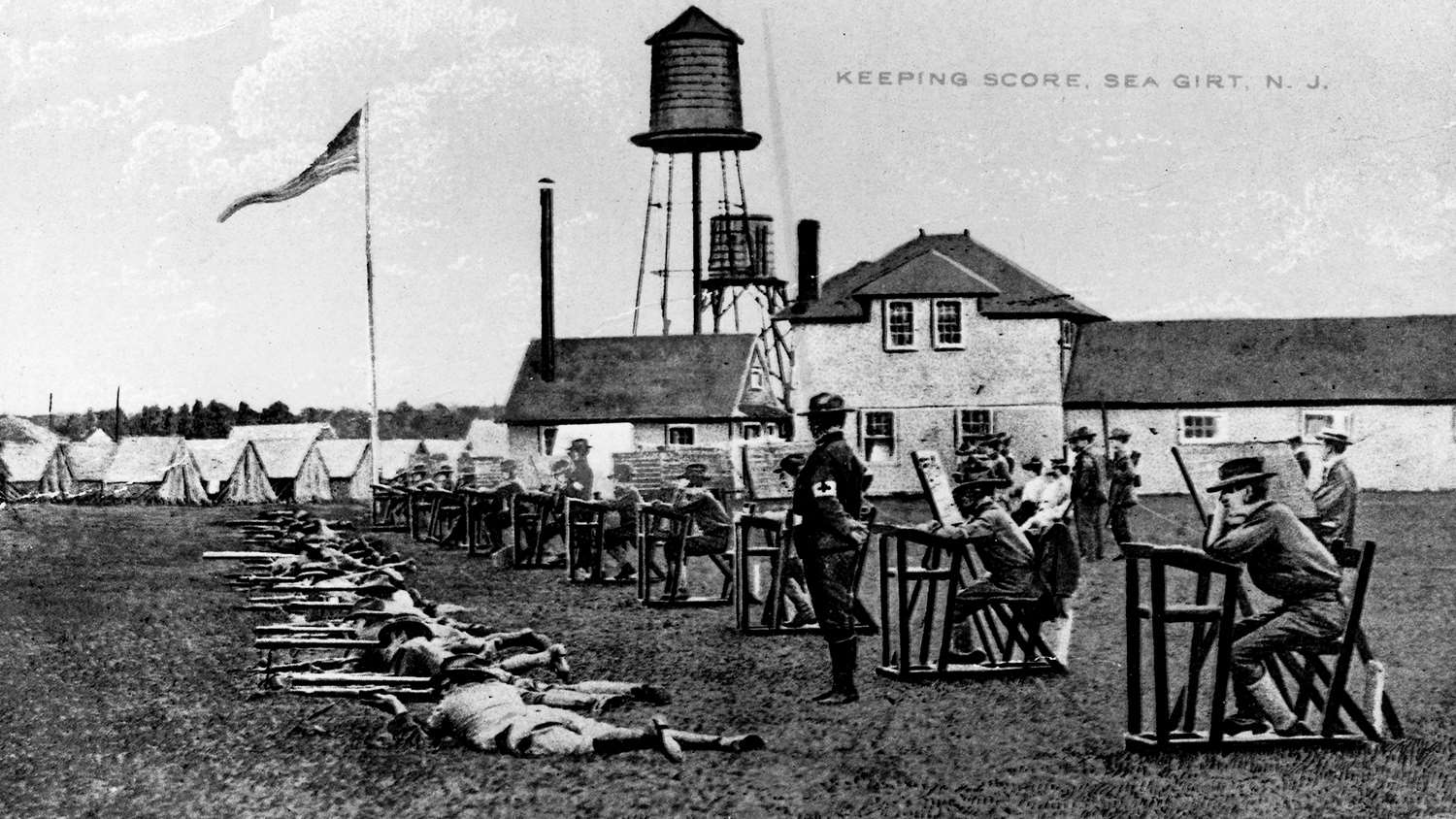
Despite the slight dampening of spirit that surrounded the Palma, all was right with NRA and its family of shooters in the new century. As if the new Members’ Trophy and the reappearance of the Palma weren’t enough to truly signify the return of the NRA to power, the U.S. government decided that modern soldiers should consider marksmanship skills a top priority. Demonstrating the new focus, and incidentally, endorsing NRA’s programs and goals, a 1903 Act of Congress was put into effect, establishing the National Board for the Promotion of Rifle Practice. Privatized as the Civilian Marksmanship Program in 1996, this board would be responsible for its half—true military firearms disciplines—of what we now call the National Rifle and Pistol Matches, while NRA continued to sanction the other half. In this way, the education of a soldier with his own gun became the goal of the two separate marksmanship factions.
A move to Camp Perry
Programs at Sea Girt, a combination of the range’s own and NRA events conducted under NRA rules, had gained popularity since the National Matches moved there in 1892. This included the induction of one of the oldest, most continuous matches known today, the originally NRA-sanctioned president’s match. Additionally, the brand new U.S. Revolver Association was already competing internationally and utilized Sea Girt for part of its telegraphic matches. With the commencement of the true joint National Matches in 1903, there were so many teams competing that the crowds overran the once adequate facilities.
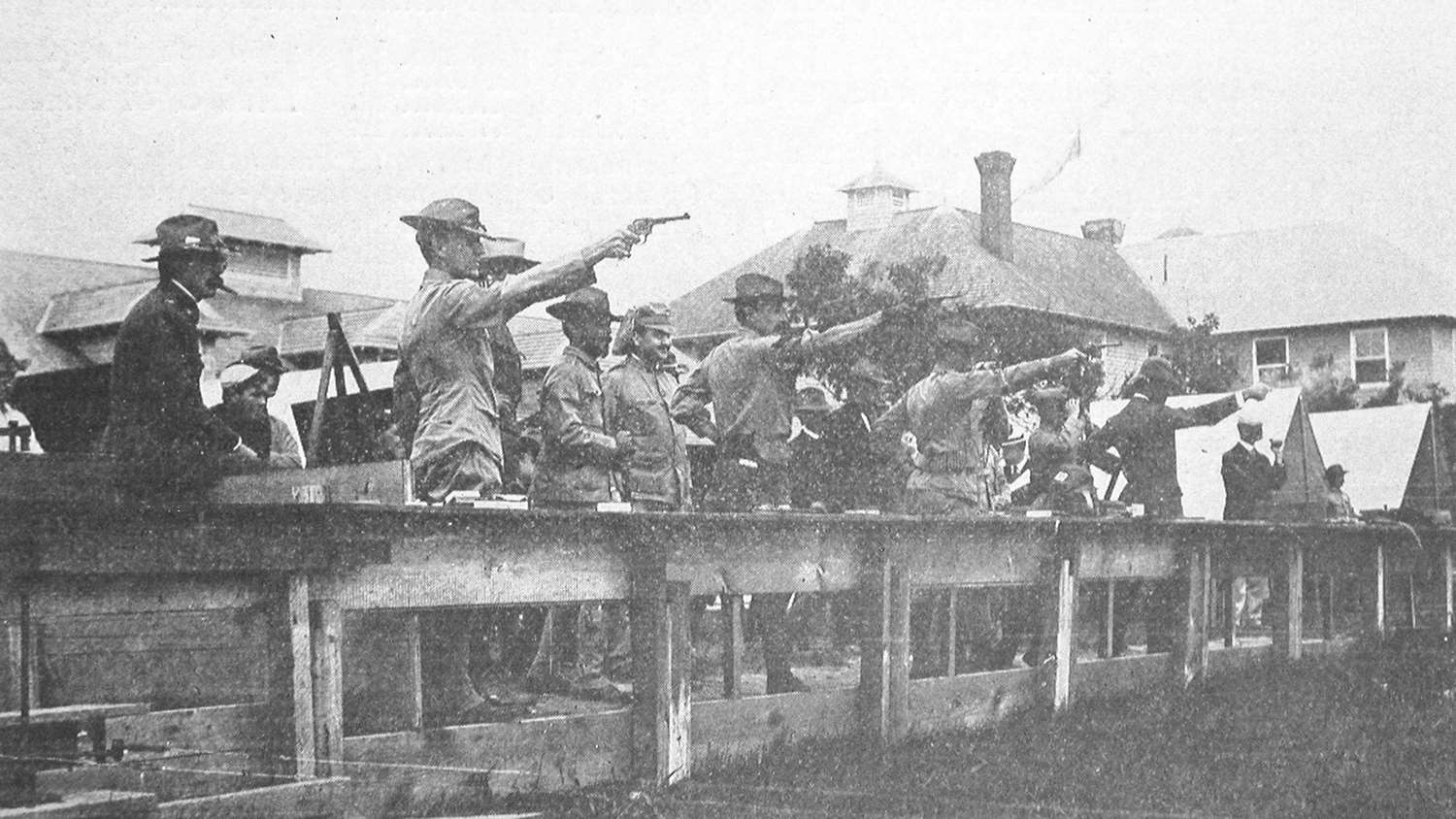
By 1905, the nation’s zest for competitive shooting was cranked up to full speed. The standard matches were attended with ever increasing popularity, the first American women shooters were on the scene, and competitive handgun events were beginning to gain momentum. Long range shooting saw renewed popularity, and the Palma was back in play as the Adj. Gen. of Ohio, Ammon Critchfield, together with the far-ranging contributions, talents and political finessing of Army Brig. Gen. James Drain, newly elected president of NRA and editor of Arms and the Man—immediate predecessor to The American Rifleman—completed the building what is now known as Camp Perry on the shores of Lake Erie in Ohio.
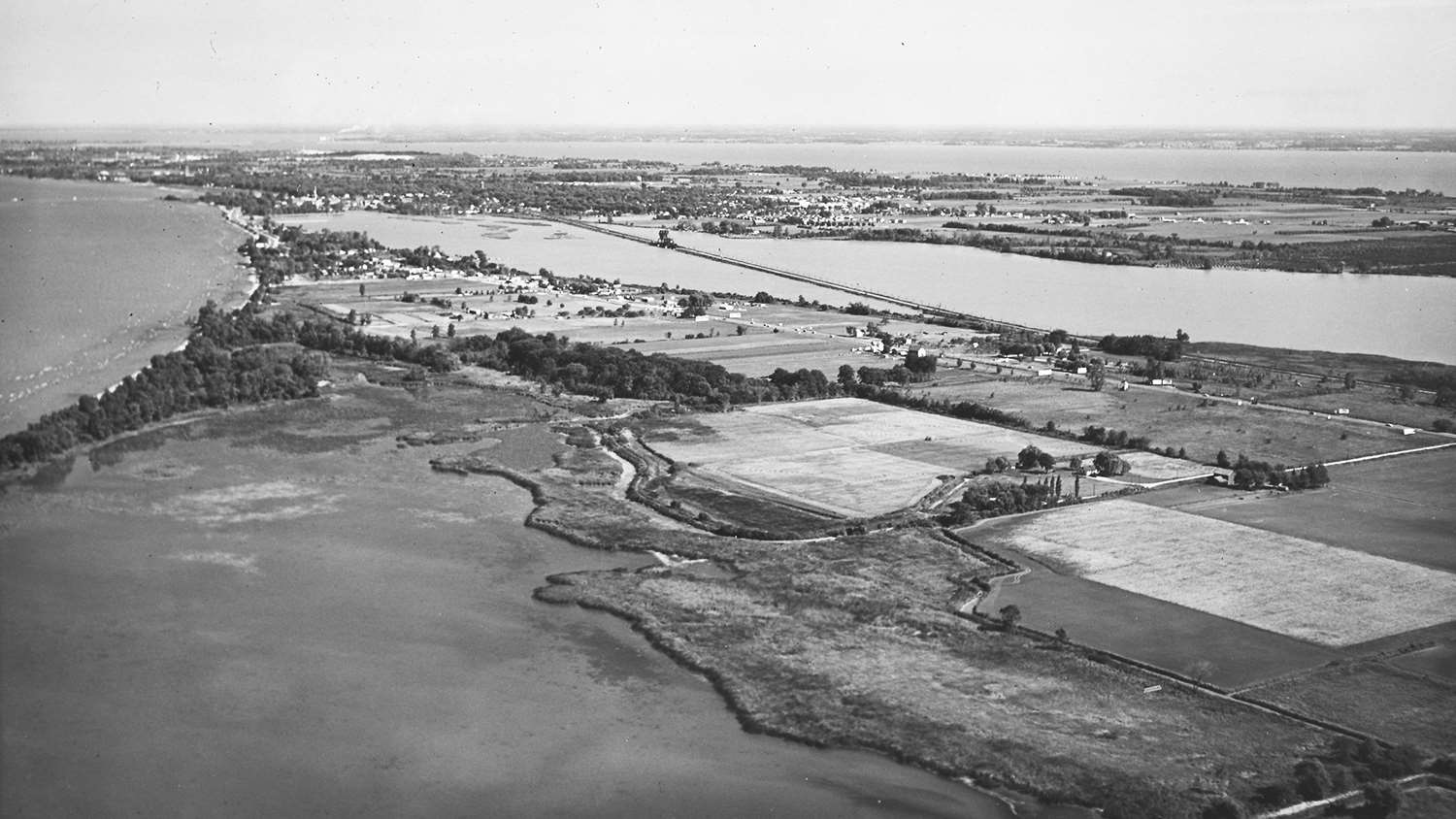
The first joint National Matches at Camp Perry occurred in 1907 along with another reappearance of the Palma. New to competition that year was the Herrick Trophy. This fairly tall and highly decorated silver cup is in an upside-down configuration, having a wider base than top. It was presented to the first winner, the Ohio State Rifle Association team, by the trophy’s namesake, former Ohio Gov. Myron Herrick.
In 1909 the Dewar Cup, owned by the British, was donated for award in the international team postal competition. The presenter of the cup was none other than Sir Thomas Dewar of the Dewar label, scotch liquor fame. This lidded, moderately engraved, traditionally styled loving cup announced the future of international smallbore competition.
Following the trend of smallbore, scholastic shooting programs had expanded on a grand scale since an initial push by NRA in 1903. As a slew of trophies for an ever-widening range of shooting disciplines found their way to the awards table, this flourishing sector would not be left out. One of those awards was the Astor Cup, a traditional silver loving cup donated by the famous Col. John Jacob Astor. The cup was first awarded in 1910 to the Iowa City High School team, which managed to capture the cup seven times and was also won by the all-girls team from Central High School of Washington, D.C., in 1922 with a perfect score. Today, the whereabouts of the Astor Cup are unknown.
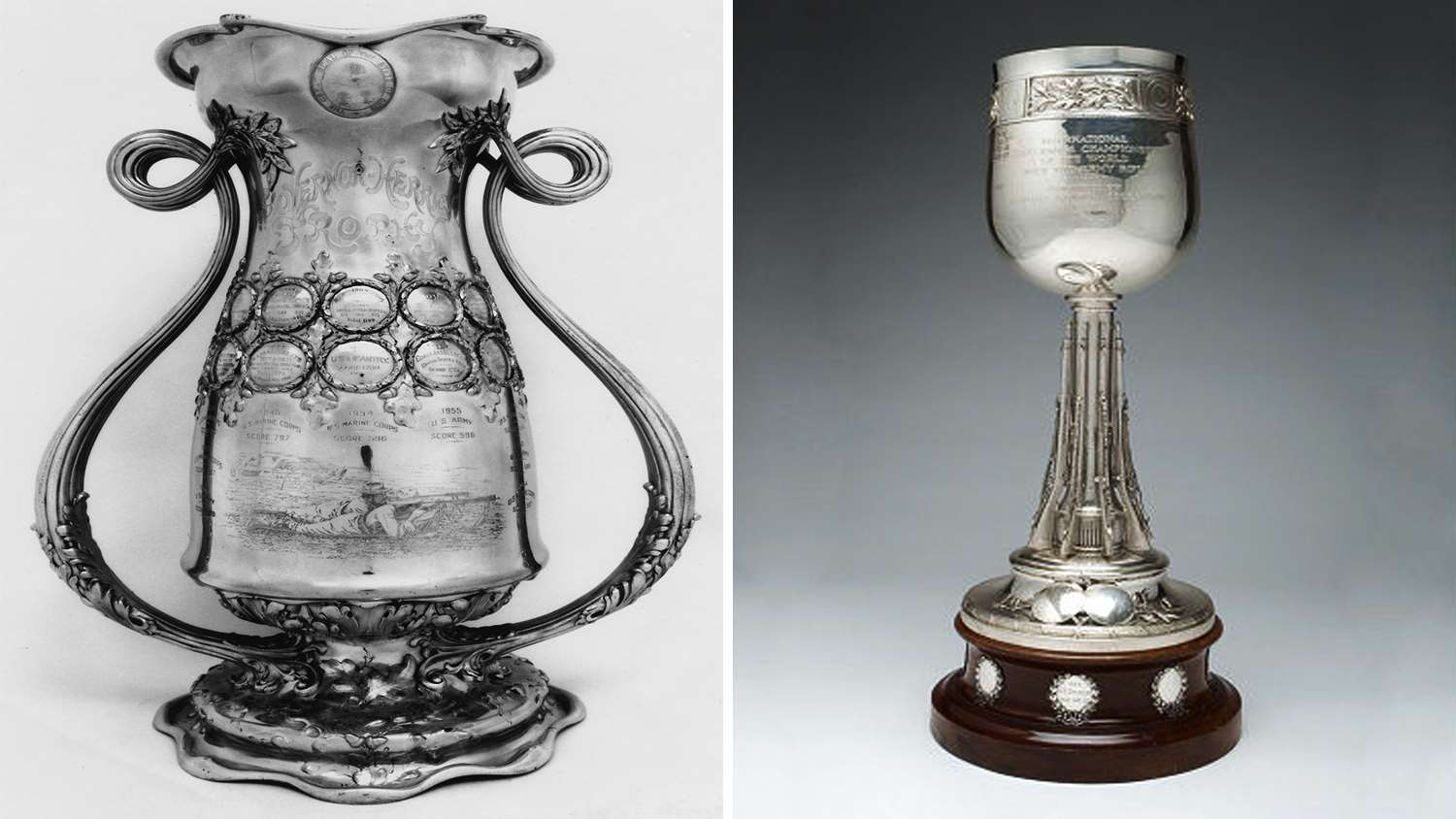
Perhaps one of the most pursued awards today is the Palma Individual Trophy, first awarded at the 1913 National “mega-match” that celebrated the 100th anniversary of the 1813 Battle of Lake Erie. This stall, long-stemmed chalice is mounted on a circular wooden base studded with silver medallions. Its support is comprised of detailed, miniature silver replicas of the 1903 service rifle, butts resting on the base, muzzles supporting and surrounding the base of the cup itself. Presented by the National Guard Association to NRA.
Note: This is the second of a multi-part series on the history of NRA trophies. Read Part 3. This work would not have been possible without the expertise and guidance of the NRA Competitive Shooting Division, the National Firearms Museum staff, and “Americans and Their Guns,” by James B. Trefethen and James E. Serven.













